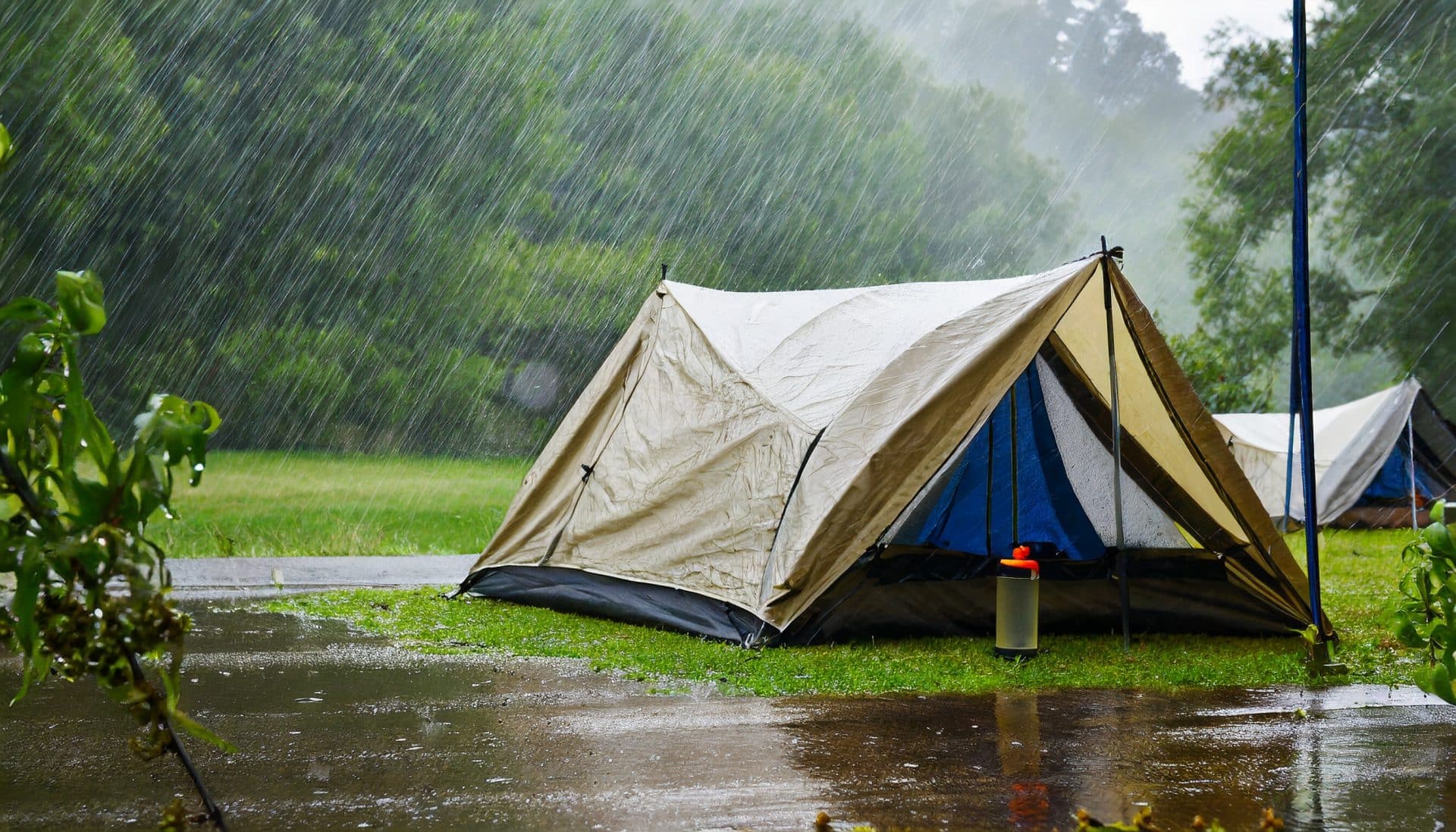Here’s a handy list of tent waterproof ratings to help guide you:
- Under 5,000mm: These tents are lightweight and suitable for fair-weather camping – think a peaceful night under the stars without a cloud in sight.
- 5,000mm to 10,000mm: Such tents are perfect for mild rain and summertime weather.
- 10,000mm to 15,000mm: A tent in this range will withstand most downpours and heavy snow – but don’t be fooled; they can eventually soak through if put under pressure. Like a stiff-upper-lip, they have their limits!
- Above 15,000mm: If you’re looking for the Tardis of waterproof tents – reliable at any time or place – this could be the range for you! They can take on heavy rain or snowfall and are perfect for long winter camping trips (remember your thermals).
Beyond Waterproofing: The Importance of Breathability
Have you ever wondered why a waterproof tent, something made of PVC, would be a rather unpleasant place to get your beauty sleep? Well, breathing in a fully waterproof environment is no picnic.
The key to avoiding this scenario is called ‘breathability.’ This term refers to the ability of a fabric to allow moisture vapour to pass through and escape the tent. A perfect balance of waterproofing and breathability ensures a comfortable living environment during your camping adventure. It prevents condensation (your secret enemy in colder conditions) from building up and dampening the inside of the tent.
How do I know how breathable my tent is? Well, just like waterproof ratings, there’s a breathability rating too. Look out for a metric called MVTR (Moisture Vapour Transmission Rate) when shopping for your next adventure tent. The higher the MVTR rating, the more breathable the fabric is.

The Unwanted Sauna: A Fully Waterproof Tent
Ever woken up in a tent that feels more like a tropical rainforest than a snug shelter? You’re not alone. That hellish sauna-like experience is what you’d get in a PVC tent.
A fully waterproof tent lacks breathability. Hence, the moisture your breath produces (and let’s not forget those wet hiking boots) builds up. It has nowhere to go and condenses on the interior, resulting in a build-up of dampness inside your tent. So, while a PVC tent might keep the rain out, inside, you’re left with a mini indoor monsoon!
So yes, waterproofing is essential (we’re all for dry socks and warm sleeping bags). But without decent breathability, your well-intentioned fortress can rapidly transform into a rainforest retreat.
Other factors to consider
Seam sealing is one of the most crucial factors in ensuring water doesn’t invite itself in for an unwanted sleepover in your tent. Waterproof ratings are all well and good, but an unsealed seam can be the wolf in a sheepskin, the silent whistle inviting droplets to take a sneak peek into your abode. You see, tent seams are like highways for water. When the tent’s fabric is sewn together, needle holes are created. These can act as entry points for water, completely ignoring your tent’s otherwise impressive waterproof rating. Many tents come with factory-taped or sealed seams, but even these can degrade and let water in over time. Regular checks and maintenance – resealing seams with silicone sealant for silicone-coated fabrics or polyurethane sealant for polyurethane-coated materials – can ensure your tent remains your dry haven.
The strength of the groundsheet can be just as pivotal, as a weaker one may allow water to seep upwards from the ground: an integrated or well-attached groundsheet, water-resistant zips, and a well-proportioned rainfly.
Making Informed Decisions for Dry and Comfortable Camping
Understanding the intricate relationship between waterproofing and breathability ratings is crucial for every camper. Navigating this maze enables one to avoid the discomfort of fully waterproof tents, akin to sleeping in unwanted saunas. Remember, your tent needs to expel moisture beyond just repelling water. As with all knowledge, using this understanding to make informed decisions is the key to ensuring dry and comfortable camping adventures, rain or snow blow.

